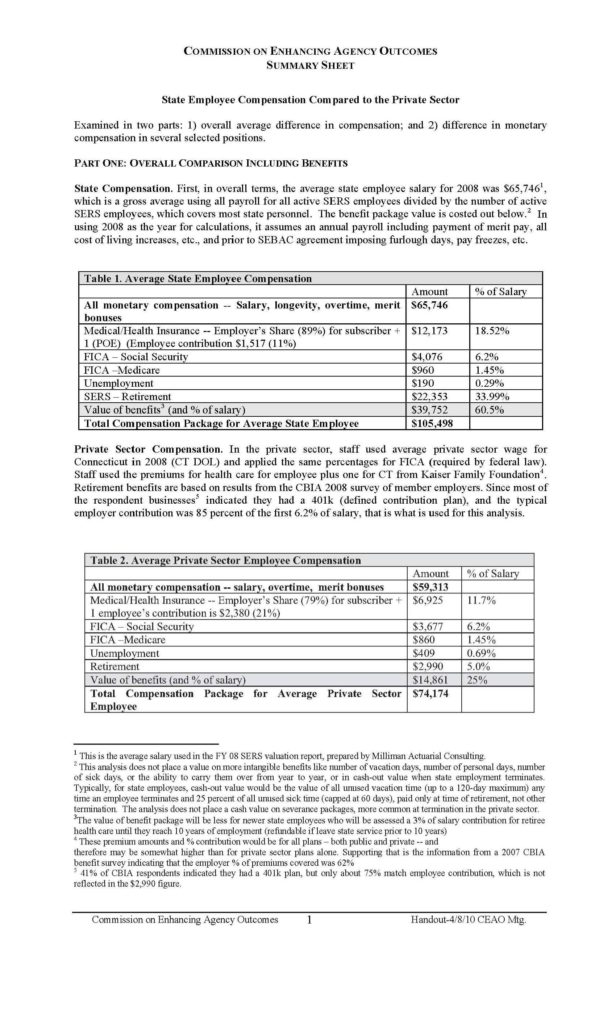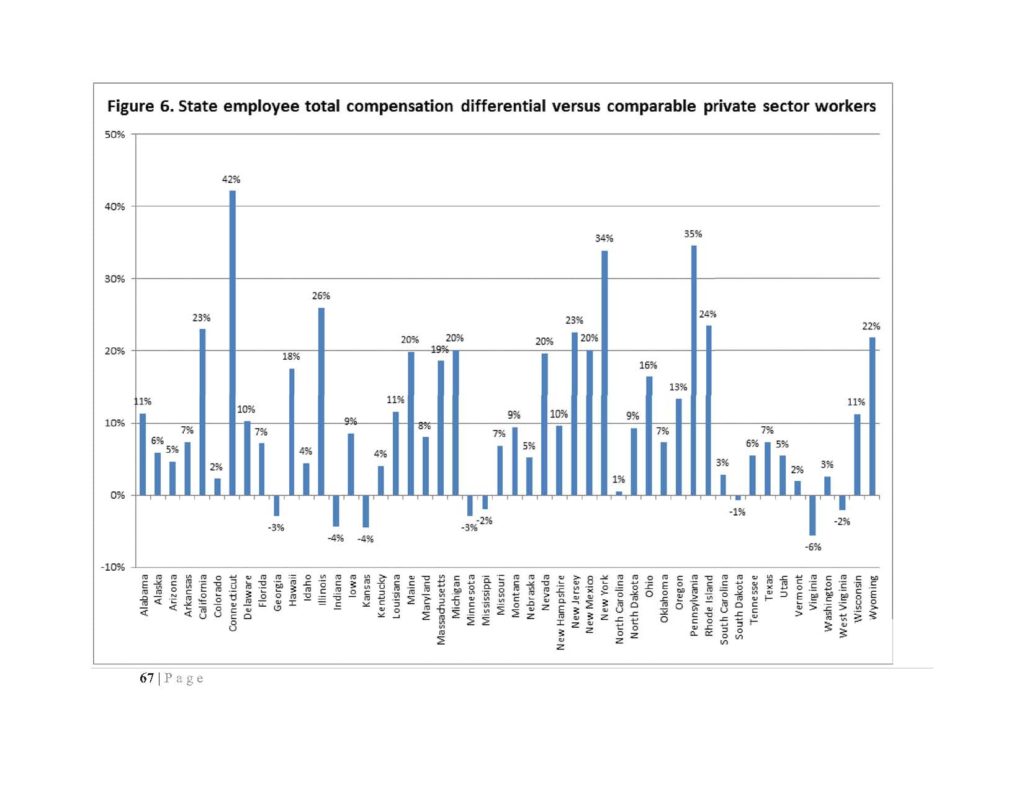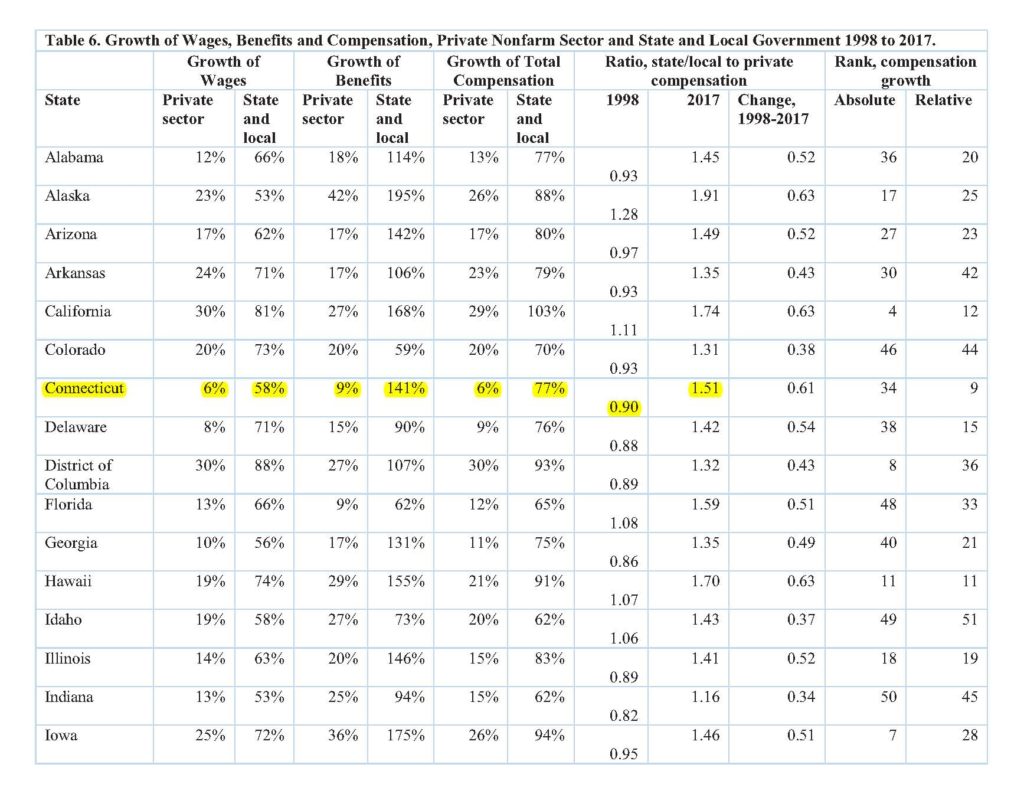
[To view embedded documents, right click to open in full size in a new window]
For the second time in roughly a decade, over 100,000 private sector workers in Connecticut have lost their jobs [now over 550,000], while not a single state employee has been laid off in either instance. For almost the entire decade, state workers have enjoyed contractual no-layoff guarantees, presently extending to 2021.
Not only that, following the Great Recession, state workers got three 3 percent annual pay raises, and, now, they are to get a 3.5% wage hike in just three months – on the heels of a 3.5% pay raise last July 1st. [on top of 1.5-2% “step increases” for total wage hikes of 5% plus]
That’s unfair, almost cruelly so in face of the unfolding economic ravages of COVID-19.
Union leaders talk about “sacrifices” by state workers. That’s shameless disinformation.
Governor Lamont should place a call immediately to Daniel Livingston, the chief negotiator for the State Employee Bargaining Alliance Coalition (SEBAC) representing unionized state workers, and demand that workers forgo the July 1st pay raise and that retired state workers give up cost of living increases for the next decade at least.
The issue of fairness and social justice does not involve only the element of shared sacrifice in times of hardship. For almost two decades, Connecticut state employees have enjoyed amongst the highest pay and benefits among state workers nationwide.

Their compensation has been significantly higher than that of state’s private sector workers in all years – good and bad. In 2010, the state’s Commission on Enhancing Agency Options looked at 2008 compensation data and found average state worker wages of $65,746 and benefits of $39,752 versus average private sector wages of $59,313 and benefits of $14,861 – for a staggering compensation premium of more than $31,000, or 42%.

In 2014, scholars at the American Enterprise Institute (AEI), Andrew Biggs and Jason Richwine, looked at 2009-2012 data and found that very same premium of 42%, which was the highest of the 50 states. The next highest premiums were 35%, 34% and 26% for Pennsylvania, New York and Illinois, respectively.
In 2019, AEI’s Biggs compared private sector compensation to public compensation at all levels of government in all 50 states. From 1998 to 2017, private sector worker compensation grew only 38%, lagging compensation for federal workers, state and local workers, and teachers which grew 67%, 44% and 40%, respectively.

Biggs found that Connecticut state and municipal workers’ compensation grew 77% over this period compared to a 6% increase in the state’s private sector. In 2017, Connecticut public sector workers enjoyed a whopping 51% compensation premium over the state’s private sector workers.
This is a gross social injustice, but it is more than that. Public sector compensation has overwhelmed the state budget and economy.
Public sector workers should embrace this reality and realize that it imperils their own jobs, wages, and health care and retirement benefits.
Just this fiscal year, Governor Lamont, a Democrat who says he supports unions, and SEBAC negotiators agreed to reduce – not increase – the state’s contribution to the state’s severely underfunded employee pension fund (SERS) – for the simple reason that the state doesn’t have sufficient revenue to fund SERS.
The state is reducing its contribution to SERS by about $100 million annually over the next decade, despite the fact that SERS is one of the four worst funded state pension funds in the nation, with less than 40% funding.
While the widely accepted narrative about the underfunding of SERS is that, historically, the state didn’t make sufficient contributions, the larger truth is that any state would have had great difficulty over decades paying such high wages, paying for virtually free employee and retiree health care and, at the same time, making massive pension contributions – without completely starving other state services and/or imposing economy-killing tax levels.
Indeed, even without making sufficient contributions, state services have been squeezed, taxes have increased in every one of the last five budget cycles and, still, the state economy has languished.
One need not be an economist or financial professional to appreciate the implications of the precipitous stock market decline and the ongoing business shutdown, which has already caused 10 million job losses, and the inevitable recession, if not depression, to follow.
Unless Connecticut state employees want to follow the experience of Puerto Rico, which declared bankruptcy in 2016 under a special federal law (PROMESA), and risk a significant loss of benefits in such a procedure, they should vote to authorize SEBAC negotiators to forgo the upcoming July 1 pay raise, to accept a ten-year freeze on cost-of-living increases for retiree pensions and other necessary reforms, all of which would cause virtually no genuine hardship when compared to state workers in other states and private sector workers here in this beleaguered state.
![]()
Red Jahncke is a nationally recognized columnist, who writes about politics and policy. His columns appear in numerous national publications, such as The Wall Street Journal, Bloomberg, USA Today, The Hill, Issues & Insights and National Review as well as many Connecticut newspapers.






Red, thank you for pointing out the need for true shared sacrifice in the face of this crisis. Few have the nerve to speak honestly about these issues.